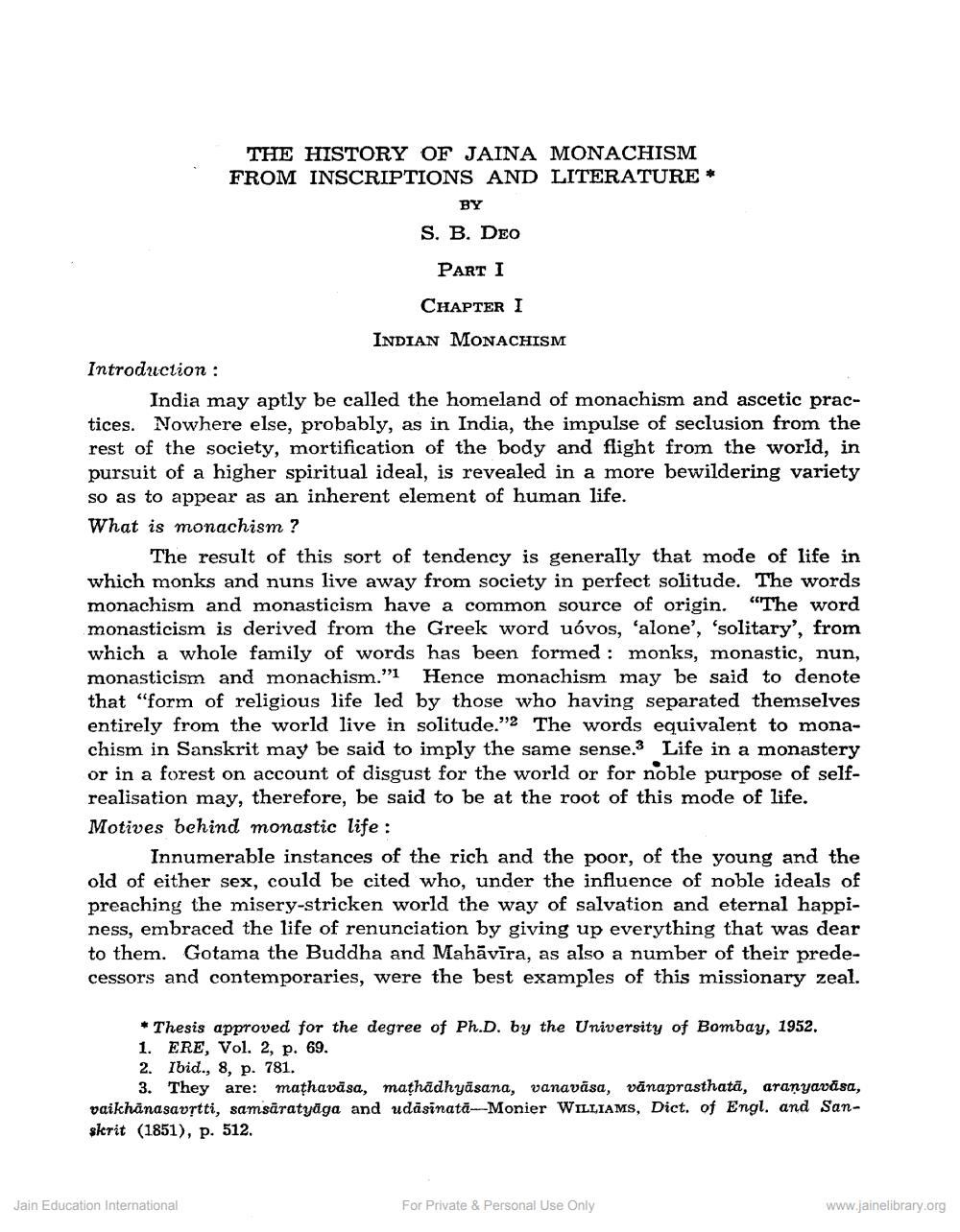Book Title: History of Jaina Monachism Author(s): S B Deo Publisher: Deccan College Research Institute View full book textPage 6
________________ THE HISTORY OF JAINA MONACHISM FROM INSCRIPTIONS AND LITERATURE * BY S. B. DEO PART I CHAPTER I INDIAN MONACHISM Introduction: India may aptly be called the homeland of monachism and ascetic practices. Nowhere else, probably, as in India, the impulse of seclusion from the rest of the society, mortification of the body and flight from the world, in pursuit of a higher spiritual ideal, is revealed in a more bewildering variety so as to appear as an inherent element of human life. What is monachism? The result of this sort of tendency is generally that mode of life in which monks and nuns live away from society in perfect solitude. The words monachism and monasticism have a common source of origin. "The word monasticism is derived from the Greek word uóvos, 'alone', 'solitary', from which a whole family of words has been formed: monks, monastic, nun, monasticism and monachism." Hence monachism may be said to denote that "form of religious life led by those who having separated themselves entirely from the world live in solitude." The words equivalent to monachism in Sanskrit may be said to imply the same sense.3 Life in a monastery or in a forest on account of disgust for the world or for noble purpose of selfrealisation may, therefore, be said to be at the root of this mode of life. Motives behind monastic life : Innumerable instances of the rich and the poor, of the young and the old of either sex, could be cited who, under the influence of noble ideals of preaching the misery-stricken world the way of salvation and eternal happiness, embraced the life of renunciation by giving up everything that was dear to them. Gotama the Buddha and Mahāvīra, as also a number of their predecessors and contemporaries, were the best examples of this missionary zeal. Jain Education International *Thesis approved for the degree of Ph.D. by the University of Bombay, 1952. 1. ERE, Vol. 2, p. 69. 2. Ibid., 8, p. 781. 3. They are: maṭhavāsa, maṭhādhyāsana, vanavāsa, vānaprasthatā, araṇyavāsa, vaikhanasavṛtti, samsaratyāga and udāsinata-Monier WILLIAMS, Dict. of Engl. and Sanskrit (1851), p. 512. For Private & Personal Use Only www.jainelibrary.orgPage Navigation
1 ... 4 5 6 7 8 9 10 11 12 13 14 15 16 17 18 19 20 21 22 23 24 25 26 27 28 29 30 31 32 33 34 35 36 37 38 39 40 41 42 43 44 45 46 47 48 49 50 51 52 53 54 55 56 57 58 59 60 61 62 ... 616
